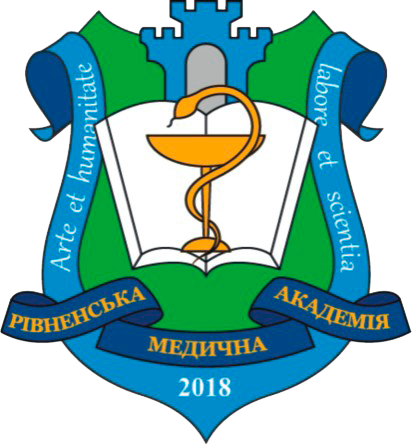ASSESSMENT OF THE EFFECTIVENESS OF THE REHABILITATION PROGRAM FOR PATIENTS WITH TEMPOROMANDIBULAR DYSFUNCTION IN THE POST-IMMOBILIZATION PERIOD AFTER A MANDIBULAR FRACTURE BY THE INDICATORS OF KINESIOPHOBIA AND QUALITY OF LIFE
DOI:
https://doi.org/10.32782/health-2023.4.31Keywords:
bone fracture, post-immobilization period, injury, rehabilitation in dentistry, maxillofacial area, temporomandibular jointAbstract
Purpose: to evaluate the effectiveness of the developed rehabilitation program on the dynamics of kinesiophobia and quality of life parameters related to the maxillofacial area in patients in the post-immobilization period after a mandibular fracture. Methods. During the study, 53 people were examined. The control group consisted of 32 people without consequences of injuries of the maxillofacial area and burdened dental status. The main group consisted of 21 people with the consequences of a mandibular fracture, who underwent rehabilitation according to a program that included therapeutic exercises; exercises with the «TheraBite Jaw Motion Rehabilitation System» simulator; massage course; thermal procedures; postisometric relaxation and proprioceptive neuromuscular facilitation; kinesiological taping; patient education. The effectiveness of the program was evaluated by kinesiophobia according to the Tampa Scale for Kinesiophobia for Temporomandibular Disorders, quality of life according to the Oral Health Impact Profile – 14. The results. During the initial examination, kinesiophobia during lower jaw movements was determined in injured persons (almost three times higher compared to healthy people (p<0.05)), a significant negative impact of dental dysfunction on health and life in general (50.14 ±0.15 points for the Oral Health Impact Profile – 14). During the reexamination, it was established that the level of kinesiophobia according to the TSK-TMD in patients decreased by 48.3% – they had a decrease in the number of responses characterizing the avoidance of certain actions; opinions regarding the reflection of the seriousness of the condition stabilized (p<0.05 relative to the initial data and indicators of healthy individuals). The reduction in the severity of orofacial dysfunctions led to an improvement in the quality of life assessed by OHIP-14 by 74% (improvement on the scales of functional limitation, physical pain, psychological discomfort, physical, psychological and social disability, handicap). Conclusions. The complex rehabilitation program demonstrated a statistically significantly better effect (p<0.05) on the studied indicators of kinesiophobia and quality of life compared to the initial data, which demonstrates its effectiveness and confirms the need for the use of specialized rehabilitation in patients with the consequences of injuries to the lower jaw.
References
Adik K., Lamb P., Moran M., Childs D., Francis A., Vinyard C.J. Trends in mandibular fractures in the USA: A 20-year retrospective analysis. Dent Traumatol. 2023. № 39(5). Р. 425–436. DOI:10.1111/edt.12857
Cabalag M.S., Wasiak J., Andrew N.E., Tang J., Kirby J.C., Morgan D.J. Epidemiology and management of maxillofacial fractures in an Australian trauma centre. J Plast Reconstr Aesthet Surg. 2014. № 67(2). Р. 183–189. DOI: 10.1016/j.bjps.2013.10.022
Jazayeri H.E., Lopez J., Khavanin N., Xun H., Lee U.K., Best D.L., Reategui A., Urata M.M., Dorafshar A.H. Comparative Benefits of Open versus Closed Reduction of Condylar Fractures: A Systematic Review and Meta-Analysis. Plast. Reconstr. Surg. 2023. № 151. Р. 664e–672e. DOI: 10.1097/PRS.0000
Рибачук А.В., Мамонов Р.О., Маланчук В.О. Епідеміологія травматичних переломів нижньої щелепи в період з 2002 по 2014 р. за матеріалами клініки кафедри. Харківська хірургічна школа. 2016. № 1(76). С. 117–122.
Asim M.A., Ibrahim M.W., Javed M.U., Zahra R., Qayyum M.U. Functional Outcomes Of Open Versus Closed Treatment Of Unilateral Mandibular Condylar Fractures. J Ayub Med Coll Abbottabad. 2019. № 31(1). Р. 67–71.
Boffano P., Roccia F., Zavattero E., et al. European Maxillofacial Trauma (EURMAT) project: a multicentre and prospective study. J Craniomaxillofac Surg. 2015. № 43(1). Р. 62–70. DOI:10.1016/j.jcms.2014.10.011
Tatsumi H., Matsuda Y., Toda E., Okui T., Okuma S., Kanno T. Postoperative Complications following Open Reduction and Rigid Internal Fixation of Mandibular Condylar Fracture Using the High Perimandibular Approach. Healthcare. 2023. № 11(9). Р. 1294. DOI: 10.3390/healthcare11091294
Petronis Z., Spaicyte N., Sakalys D., Januzis G. Functional Rehabilitation after Mandibular Fracture – A Systematic Review. Ann Maxillofac Surg. 2022. № 12(2). Р. 197–202. DOI:10.4103/ams.ams_99_22
Azam I., Chahal A., Kapoor G., et al. Effects of a program consisting of strain/counterstrain technique, phonophoresis, heat therapy, and stretching in patients with temporomandibular joint dysfunction: A pilot study. Medicine (Baltimore). 2023. № 102(32). Р. 34569. DOI: 10.1097/MD.0000000000034569
Аравіцька М.Г., Шеремета Л.М., Данильченко С.І., Довгань О.В. Ефективність засобів фізичної терапії у корекції функціонального статусу скронево-нижньощелепного суглоба при артрозі. Український журнал медицини, біології та спорту. 2021. Т. 6. № 6(34). С. 188–193. DOI: 10.26693/jmbs06.06.188
Стандарт медичної допомоги. Невогнепальні переломи нижньої щелепи (виросткового відростка, гілки, кута, тіла та симфізу). https://www.dec.gov.ua/wp-content/uploads/2023/06/1096_16062023_smd.pdf
Травми щелепно-лицевої ділянки. Клінічна настанова, заснована на доказах. https://www.dec.gov.ua/wpcontent/uploads/2023/02/2023_kn_travma.pdf
TheraBite® Jaw Motion Rehabilitation System™. https://www.atosmedical.us/product/therabite-jaw-motionrehabilitation-system
Visscher C.M., Ohrbach R., van Wijk A.J., Wilkosz M., Naeije M. The Tampa Scale for Kinesiophobia for Temporomandibular Disorders (TSK-TMD). Pain. 2010. № 150(3). Р. 492–500. DOI: 10.1016/j.pain.2010.06.002
Slade G.D., Spencer A.J. Development and evaluation of the Oral Health Impact Profile. Community Dent Health. 1994. № 11(1). Р. 3–11.
Дідоха І.В., Аравіцька М.Г. Вплив засобів фізичної терапії на рівень кінезіофобії, соматичні маркери саркопенії та показники ризику падіння у осіб похилого віку з хворобою Паркінсона. Art of Medicine. 2021. № 2(18). С. 50–58. DOI: 10.21802/artm.2021.2.18.50





